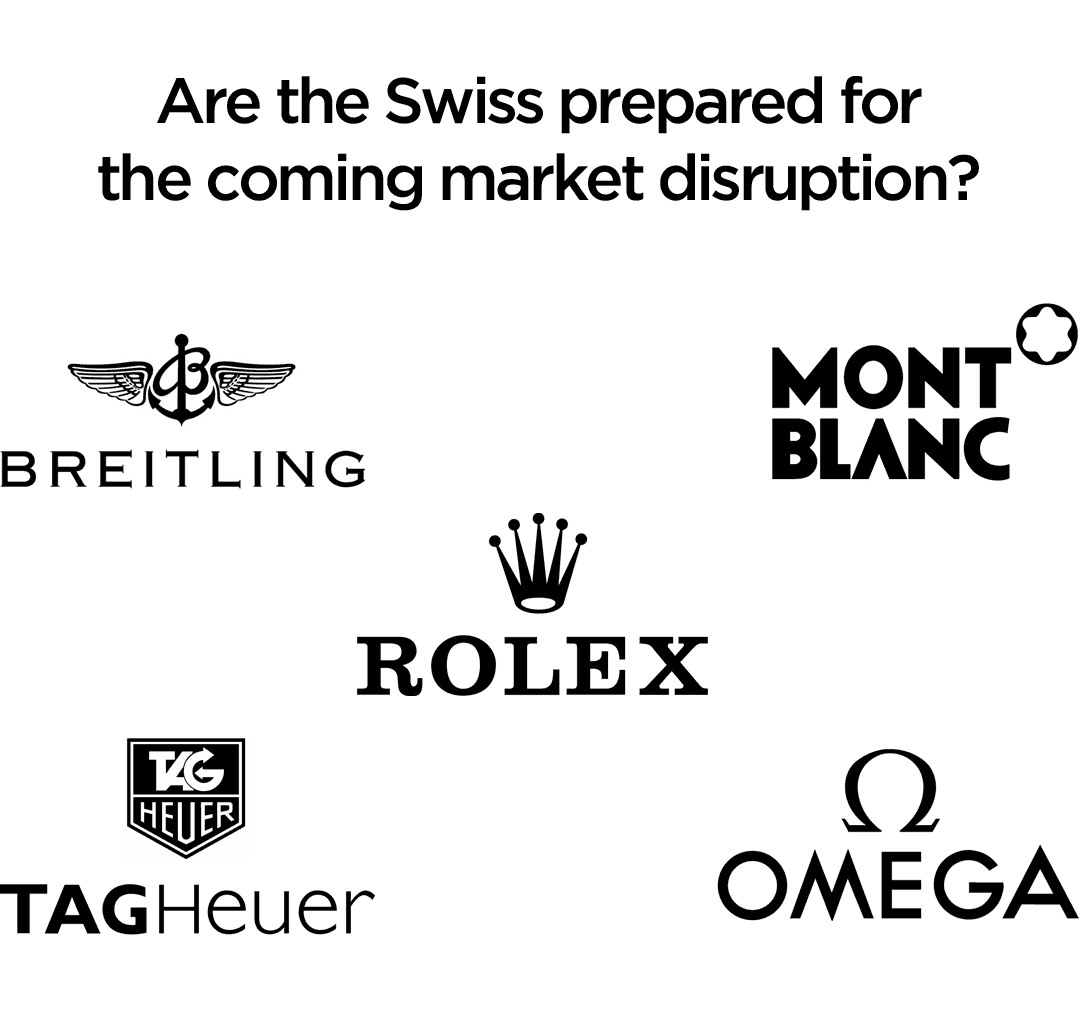Jewelry Tech
 Wednesday, July 16, 2014 at 3:10PM
Wednesday, July 16, 2014 at 3:10PM 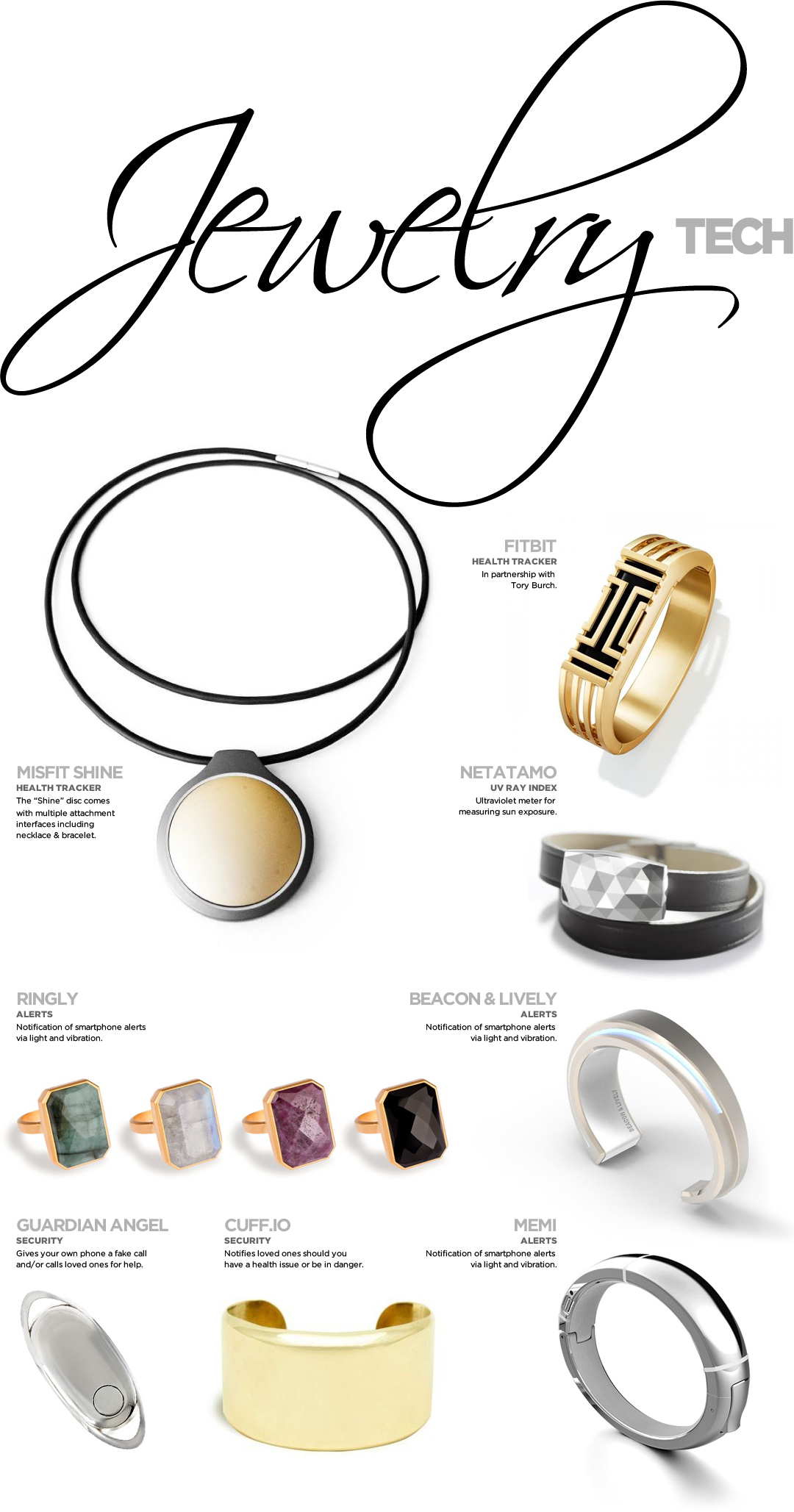
Most jewelry tech falls into three categories: health trackers, alerts notifications, and security communicators. Of those shown here, only Netatamo is the exception, an ultraviolet meter to let the wearer know when they have had too much sun exposure.
As of January, Fitbit controlled 68% of the fitness tracker market, and due to Nike’s exit from the market, that number is likely larger and rising. The much anticipated bracelet (shown) and pendant from their partnership with Tory Burch was released this week. Misfit Wearables produces a fitness tracker called the “shine” which consists of a small disc that can be fitted into different enclosures including a plastic wristband, and the necklace shown here.
Among the alert notification jewelry, Ringly, Beacon & Lively and Memi all have the same basic functionality: if one’s smartphone receives certain notifications, messages or calls, the device can either blink or vibrate. Though none have yet shipped, the current momentum is behind Ringly — they began taking orders this month. They are reporting that some colors have already sold out, though actual numbers have not been shared. The Memi smart-bracelet is also taking preorders but has received much less media attention. Though just days away from concluding their Kickstarter crowd-funding campaign, Beacon & Lively are far from reaching their funding goal.
The last of these categories, security communications, is the most controversial and has received some criticism. Guardian Angel was conceived of by the Thailand office of advertising agency J. Walter Thompson, led by Chief Creative Officer Valerie Cheng. Commissioned for an anti-rape campaign, the agency came up with a device worn on a chain, either as a necklace or bracelet with a single button. Pressed once, it sends a fake call to the user’s own phone, in order to create a excuse to exit a bad social situation. If the button is held down longer it sends an “SOS” distress signal with the wearer’s GPS location to a designated third party (spouse, relative, friend, etc.). Though it has received a fair amount of positive press coverage, it was the subject of a negative review in The Verge, that went viral. Cuff.io offers a collection of bracelets and pendent necklaces that also send an SOS to a designated recipient. When the company first launched, its messaging positioned itself as the more fashionable alternative to Life-Alert, famous for their “I’ve fallen, and I can’t get up,” late night commercials. After the PR blitz of Guardian Angel, Cuff.io reframed much of their marketing messaging around an implied rape/attack prevention scenario as seen on their homepage, heavy on fear marketing. Communicating a commercial product to a consumer audience aimed at sexual assault prevention while maintaining tact and respect, without selling on fear is very difficult. If competition validates market demand, then there is certainly a market for these devices — competitors entering the space include Sense6 and others, following fast.
Now let us look at the big tech players.
Google has recently launched the Android Wear platform, and Motorola has released CAD renderings of their flagship watch design, the Motorola 360 (below) running Android Wear. If the build quality lives up to the design, it is an impressive showing. Lessons learned from their more homely cousin, Google Glass, it seems to have sunk-in that in wearables — more than ever, style matters.
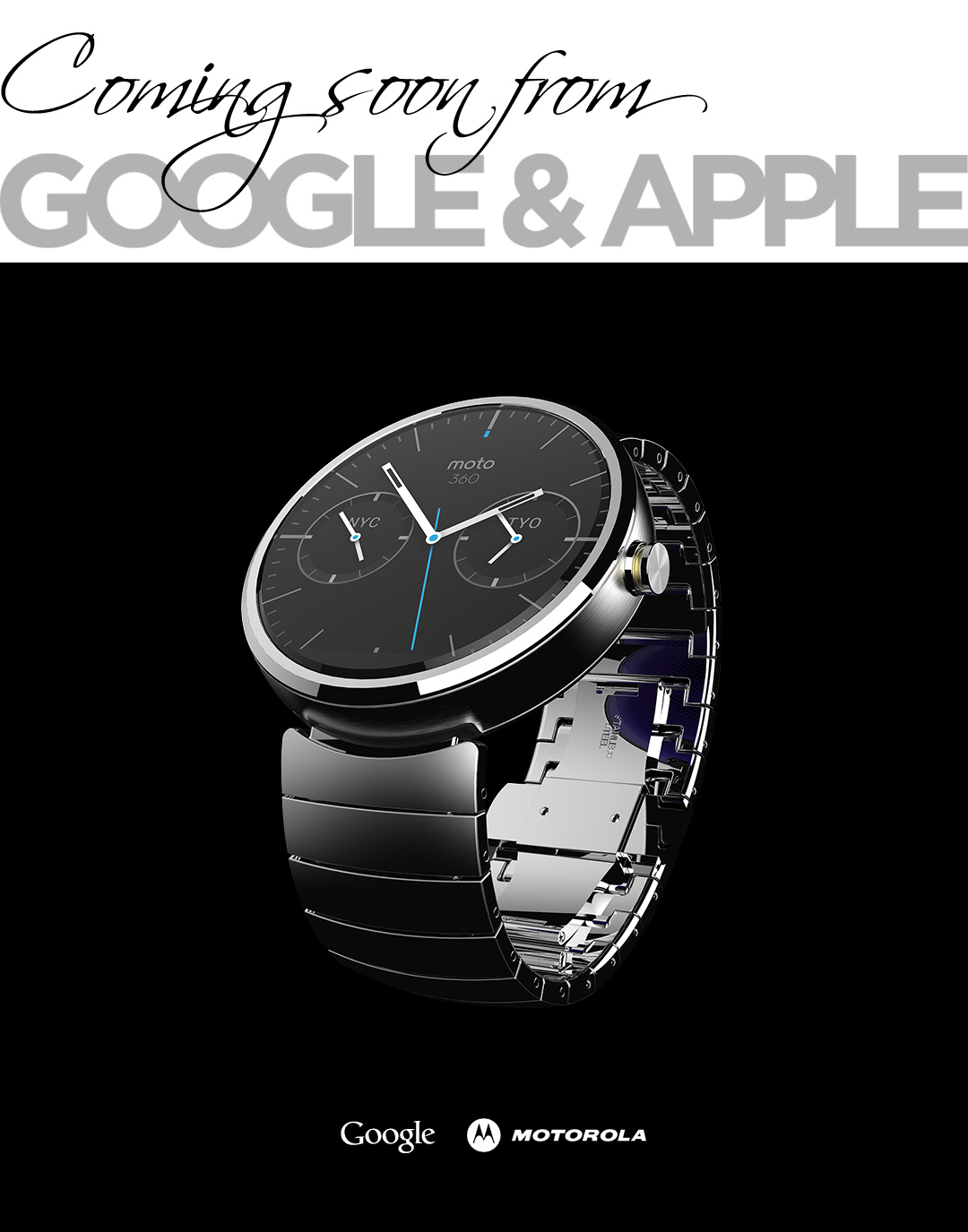
In typical Apple fashion, nothing of the design of their rumored iWatch has leaked. It will likely stay locked down tight until the veil is removed at an announcement ceremony later this year. What we do know is that they’ve been busy acquiring talent. Not just engineering talent, but poaching big players from across the luxury goods market, Paul Deneve, Angela Ahrendts, and Patrick Pruniaux among them (shown below).
On the health tracker side, in addition to poaching Jay Blahnik, Ryan Bailey and Jon Gale from the former Nike Fuelband team, they have also brought on an entire phalanx of medical device professionals over the last 12 months.
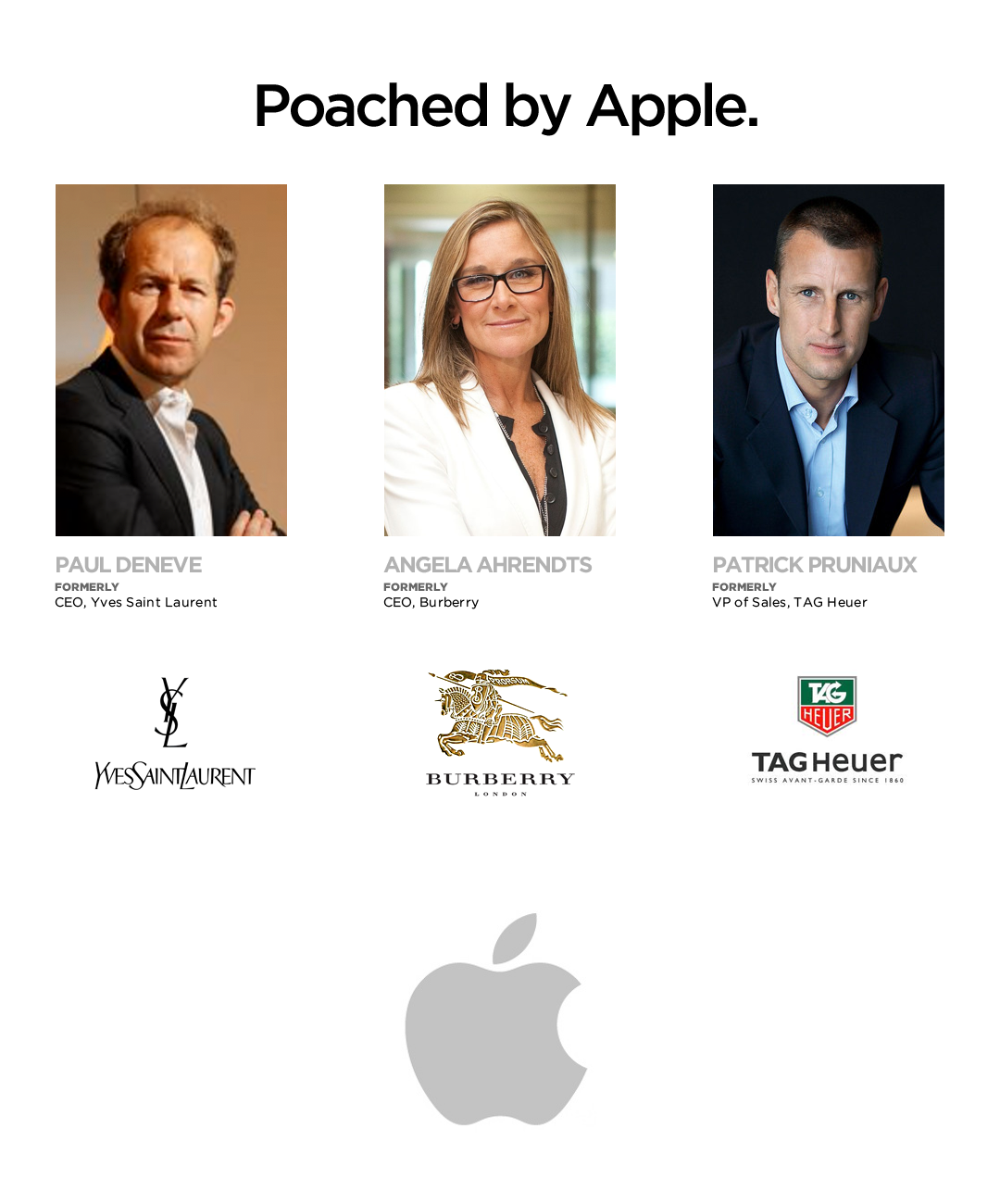
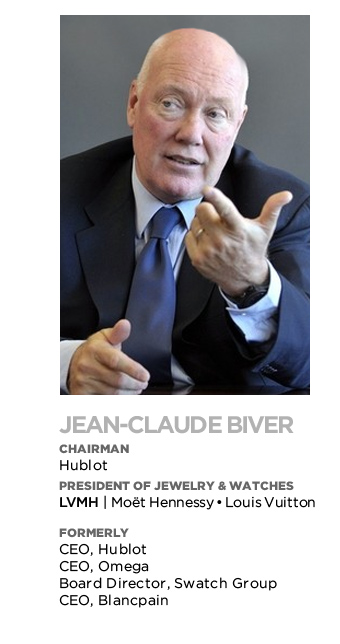 Jean-Claude Biver, Chairman of Hublot, and President of Watches & Jewelry for parent company LVMH, the world’s largest luxury brand conglomerate, has remarked in the press regarding smart-watches, “It would be pretentious to think that this kind of watch would fail to compete with Swiss watches. But they will in any case clearly not be competing with the high-end Swiss watches, which account for most of the exports.”
Jean-Claude Biver, Chairman of Hublot, and President of Watches & Jewelry for parent company LVMH, the world’s largest luxury brand conglomerate, has remarked in the press regarding smart-watches, “It would be pretentious to think that this kind of watch would fail to compete with Swiss watches. But they will in any case clearly not be competing with the high-end Swiss watches, which account for most of the exports.”
Though unusually cautious in his wording, Jean-Claude still may have spoken too soon. A report has leaked from KGI, by analyst Ming-Chi Kuo (known for having good information in the past) that says the device billed as the iWatch will have at least two models, and will be priced in the “thousands of dollars”. This would imply (as I have long suspected) that Apple’s watch will in fact be targeted at the fine watch market.
Jean-Claude Biver’s voice in this matter is larger even than his title(s) might suggest. When in the early 80s, he was head of Blancpain, quartz-movement had replaced most of the mechanical watch industry, even in Switzerland, which was loosing the industry to Japan. Jean-Claude declared publicly that Blancpain had never and would never make a quartz watch, and led the entire Swiss watch industry back to the mechanically engineered watches that had made the region famous. This revival is still in full swing to this day. His reputation as the guardian of the Swiss mechanically engineered tradition has earned him the loyalty of the industry, and has almost single-handedly prevented Apple from poaching top Swiss watch design talent. The onslaught of the coming smart-watches, especially a high-end watch like that presumed from Apple, will be the biggest test of the Swiss watch industry since quartz-movement, and all will be looking to Jean-Claude Biver for guidance.
